Eliminate Plant Aphids | How to identify | Control methods
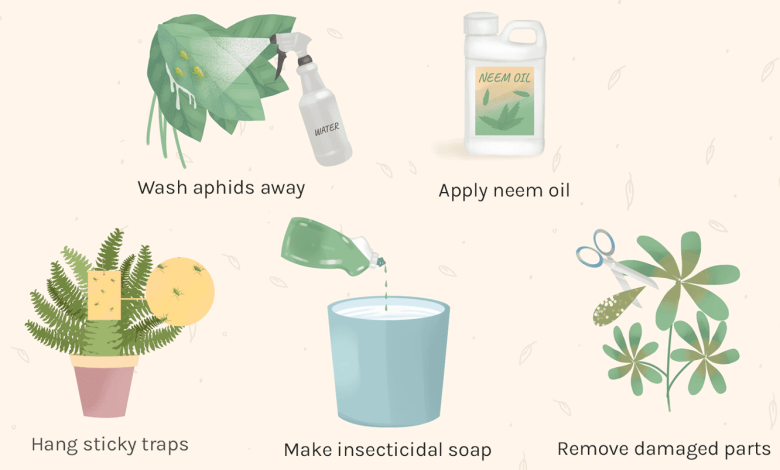
The aphid is one of the common pests of orchards and gardens. It is important to know how to eliminate aphids with ecological remedies that are not harmful to the environment.
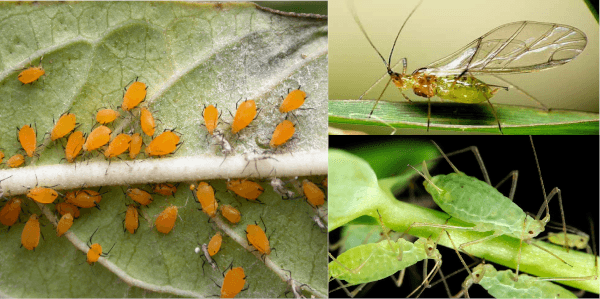
Green aphid What are aphids and what do they eat?
These small insects (1 to 3 mm long) can have different colors depending on the species to which they belong: there are green, gray, yellow, black aphids…
Although the green aphid is one of the most common, the morphology or shape of the body of the aphids (ovoid and without visible distinction of the regions -head, thorax and abdomen-, four or six antennae and three ocelli) is practically the same in the different species.
What plants do aphids attack?
Most aphids are polyphagous, that is, they have no preference for a specific plant species and feed on «almost everything».
The green aphid attacks the young shoots of many types of plants, both indoors and outdoors. Especially those crops with a high sugar content: legumes (broad beans, peas, beans…), other vegetables such as potatoes or cabbage, vegetables, fruit trees, ornamental plants (very common in rose bushes), etc.
How are aphids produced?
In early spring, the eggs give rise to wingless females that reproduce by parthenogenesis. A type of sexual reproduction that requires a single gamete. Without the need for a male to fertilize them, females can produce more than 150 offspring. They give rise to generations of wingless (wingless) aphids that remain feeding on the plant where they were born and to other generations with wings that colonize different plants.
In just one week, these aphid offspring are already adults and can reproduce just like their parent. Therefore, the invasion is very fast. Several annual generations can be produced from a single individual. When environmental conditions begin to no longer be adequate, a generation with amphiphonic sexual reproduction (males and females) is produced. It will reproduce, giving rise to eggs that will hibernate during the cold season until they hatch the following spring.
How to identify aphid damage
The eggs hatch in spring and the larvae that emerge from them cause damage due to the construction of galleries in the leaves of the affected plant.
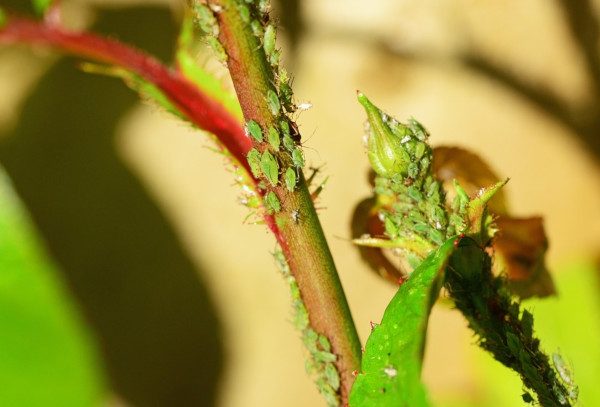
Adult aphids move slowly across the plant and feed by sucking sap from leaves, flower buds and young shoots through the stylet of their mouthparts.
The main damage of aphids on plants is leaf curling, deformation of young shoots and small yellow or brown spots on the leaves around the bite points.
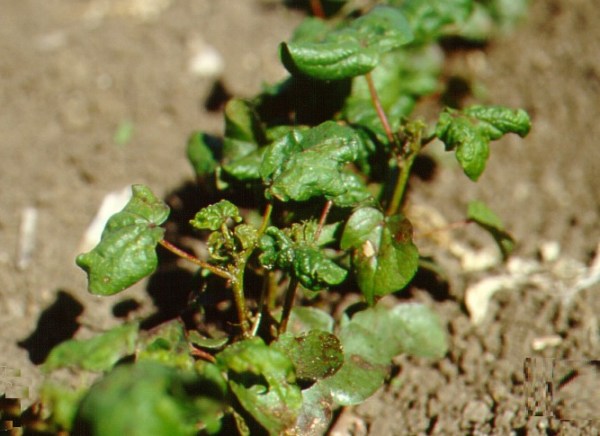
In addition, aphids excrete a sugary and sticky liquid, molasses, which not only covers the surface of the plant, but also attracts ants (since it serves as food) and favors the appearance of a fungus, sooty mold or bold, which produces black soot-like spots that hinder photosynthesis and slow growth.
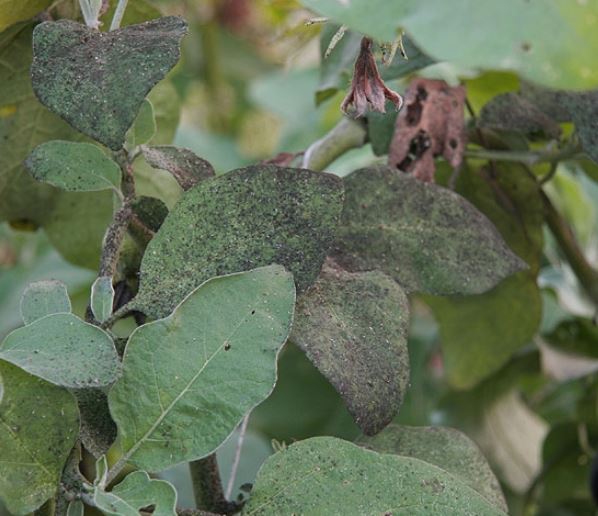
They can also cause indirect damage by transmitting viruses from one plant to another. Winged aphids that bite a plant infected with a virus will transmit it to other healthy plants that they feed on throughout their lives.
Control of aphids with ecological methods
As we have seen in the article Control of pests and diseases in organic gardens, prevention must be the basis of adequate pest control. Even more so in the case of the green aphid, which reproduces exponentially.
To prevent aphids we must follow the following tips:
- Eliminate weeds to prevent aphids from taking refuge in them and colonizing nearby plants.
- Proper preparation and protection of the substrate, as well as correct fertilization and irrigation, reduce the chances of attack by pests and diseases.
- If the presence of ants is detected, try to kill them as they have a symbiotic relationship with aphids: they protect them and transport them to feed on the molasses they excrete.
- Plant, near the species that can be attacked by this pest, plants that repel aphids, such as basil (and herbs in general), nettle or garlic.
- Apply paraffin oil or winter oil: It is applied in winter on trees and shrubs without leaves, especially if they have been attacked the previous spring or summer. It is a physical method that forms a film on the aphid eggs and causes them to suffocate.
- Onion skins or garlic cloves spread over the soil of the crops also act as a repellent.
Ecological remedies to eliminate aphids
For an effective control of pests avoiding the use of chemical or artificial products, we must plan the integrated fight, the ecological technique to eliminate aphids and other pests that simultaneously uses different methods that combat them without damaging the environment.
Some of the ecological methods to eliminate aphids are:
- Mechanical methods: Prune the most affected shoots or remove aphids by brushing the shoots and leaves with a small brush.
- Physical methods: placement of chromatic traps.
- Homemade plant-based insecticides and other aphid repellents:
- Soapy water (with potash soap).
- Infusion of onion or garlic.
- Nettle slurry.
- Horsetail infusion (Equisetum arvense).
- Neem extract.
- Pyrethrum.
- Biological control: the use of natural enemies of pests is very useful. We can release predatory aphid insects (such as ladybugs, lacewings, earwigs, wasps…) and also commercial preparations of fungi that attack aphids.
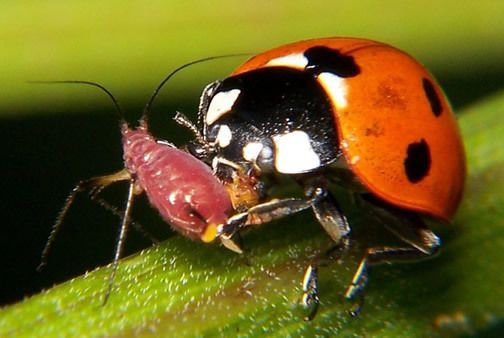
If you want more details about ecological remedies and advice on how to eliminate an aphid plague and other insects from garden plants, I leave you this link to the article on 10 natural or ecological insecticides.
References
- Schmidt, MH et al., 2003. Relative importance of predators and parasitoids for cereal aphid control. Proceedings. Biological sciences, vol. 270 (1527), p. 1905–1909.
- Foottit, RG & Maw, HEL, 2003. Insects and other animals | Aphids. Encyclopedia of Rose Science, pages 426-431.
- Dughetti, A., 2012. Aphids, Key to Identifying Wingless Forms That Attack Cereals. National Agricultural Information Network, National Institute of Agricultural Technology (INTA), Ministry of Agroindustry, Argentine Republic.
- Carrancio, L. et al., 2014. Description and identification of horticultural crop pests. Ed. National Institute of Agricultural Technology (INTA). Miscellaneous Publication No. 52 – Oliveros Agricultural Experimental Station. Ministry of Agriculture, Livestock and Fisheries (Rep. Argentina).

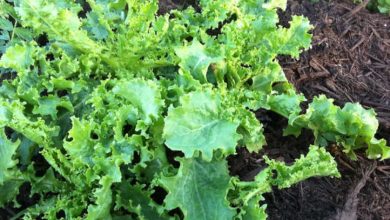
![Photo of Why is my Tomato Plant not producing Fruit? [Causes and Solutions]](https://www.complete-gardening.com/wp-content/uploads/2022/08/why-is-my-tomato-plant-not-producing-fruit-causes-and-solutions-390x220.jpg)
![Photo of Hyacinth Care: [Soil, Humidity, Pruning and Problems]](https://www.complete-gardening.com/wp-content/uploads/2022/08/hyacinth-care-soil-humidity-pruning-and-problems-390x220.jpg)
![Photo of How to Plant Sweet Potatoes Step by Step [Images + Complete Guide]](https://www.complete-gardening.com/wp-content/uploads/2022/08/how-to-plant-sweet-potatoes-step-by-step-images-complete-guide-390x220.jpg)